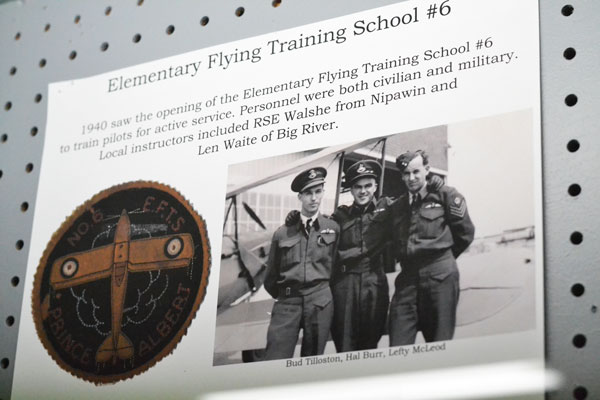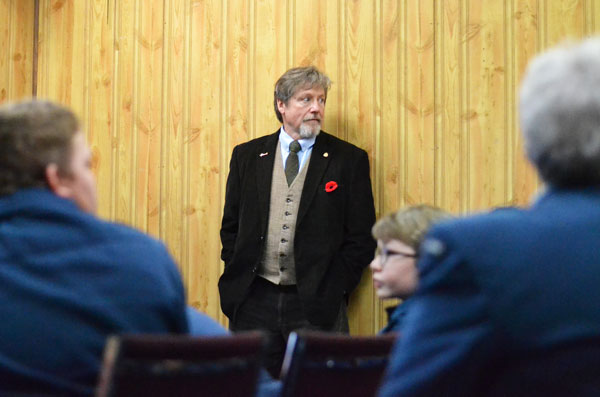
“Next time you’re at the airport, pause for a moment in front of the monument to consider the lives and stories of the people whose names are on that plaque.” – Bob Spracklin
A past Prince Albert Historical Society volunteer is shedding light on an often overlooked part of the Second World War.
The Historical Society opened up the museum on Monday for Remembrance Day, where Bob Spracklin did a presentation on those who died at the Elementary Flight Training School (EFTS) #6 in Prince Albert.
A cairn at the airport displays 17 names of the young students who passed away because of the hazards at the school, not even making it to serve in the war.
“Next time you’re at the airport, pause for a moment in front of the monument to consider the lives and stories of the people whose names are on that plaque, to the people who never even made it past their training,” said Spracklin at the end of his presentation.
“That’s a part of the story of the Canadian Airforce that sometimes gets overlooked.”
A display in the museum says as part of the British Commonwealth Air Training Plan, the Allies would train in unpopulated areas in Canada, including Prince Albert. They were unable to train in England because they could be targeted by Germans.
The EFTS operated in the city from 1940 to 1944. The school provided the second round of training before you got assigned to be a flight, bomber or transport pilot.
According to Spracklin, first you’d go through ground training, then the EFTS and lastly service training. The Air Observer School opened in Prince Albert in 1941.
Students had only eight hours of dual instruction before they were on their own. If they needed more time, instructors gave them a maximum of four more hours. Training lasted seven weeks.
The EFTS had 2,647 pilots, which made up about five per cent of those in the British Commonwealth Air Training Plan.
“The students were young; the instructors were not much older. And the pressure to get things done was great,” said Spracklin, adding that the students were usually about 19 or 20 years old.
“It’s a major part of why the airport is where it is. Prince Albert calls itself the Gateway to the North, but in the ’30s and ’40s, there was a lot of aviation moving north from here and it was one of the reasons why the site was selected to be one of the first airfields used in the prairie provinces.”

Historical Society volunteer Fred Payton said they always do a presentation for the local cadets on Remembrance Day.
“We want to commemorate the sacrifices that so many of our local citizens have made through the years in the various wars,” he said.
“And not just the ones who were killed, but the ones who came home wounded—wounded physically, wounded mentally and emotionally, psychologically.”
He said having the military exhibit allows people in Prince Albert to connect to its history, and sometimes their own family history.
Second World War veteran Ed Laird also spoke to the cadets at the museum.
Please note: A previous version of this story incorrectly stated the number of people who died at Elementary Flight Training School #6. It has since been changed to 17, the correct number. The Herald apologizes for the error.

